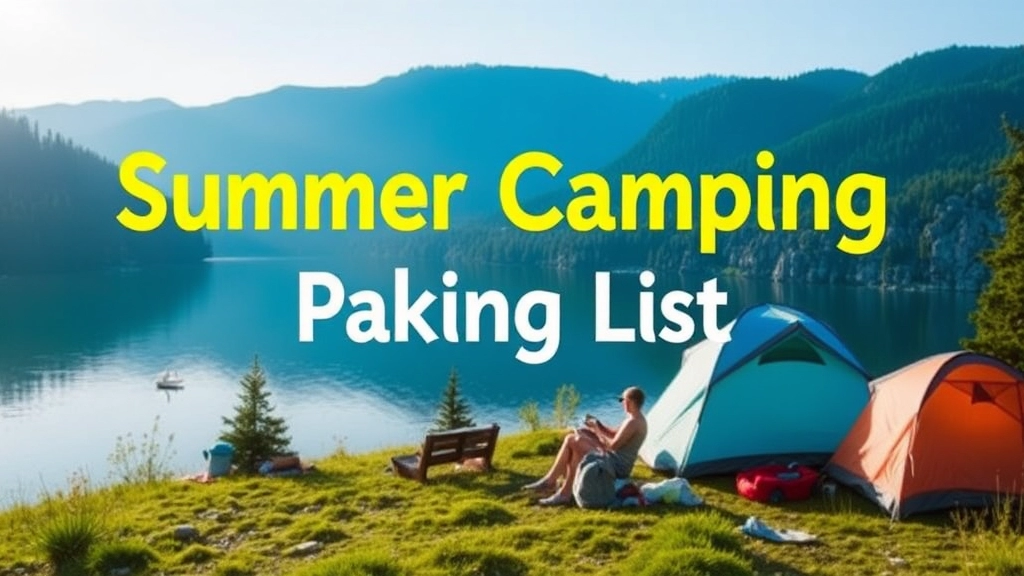Planning a Summer Camping Trip?
Whether you’re a seasoned camper or a first-timer, having a comprehensive Summer Camping Packing List is crucial to ensure a smooth and enjoyable adventure. This guide covers everything from essential gear and shelter to cooking essentials and safety items, making sure you’re prepared for all the elements and ready for fun.
What You’ll Need
We’ll dive into what you need for a comfortable sleep, how to pack smartly, and the must-have electronics and lighting for your campsite. Plus, we’ve got tips on packing for kids and pets, choosing the right footwear, and ensuring campfire safety.
Get Ready for an Unforgettable Trip
Get ready to make your summer camping trip unforgettable with our detailed and practical advice.
Essential Gear for Summer Camping
Ever found yourself knee-deep in the woods, wondering if you packed everything you need for a summer camping trip? Trust me, you’re not alone. Let’s dive into the essentials that’ll make your camping experience smooth and enjoyable.
What Do You Really Need?
Summer camping gear is all about balancing comfort and practicality. You want to enjoy the great outdoors without lugging around unnecessary stuff.
Key Items to Pack
- Tent and Shelter: A reliable tent keeps you dry and safe. Look for one that’s easy to set up and has good ventilation.
- Sleeping Gear: A comfy sleeping bag, pad, and pillow are a must. You don’t want to wake up sore and grumpy.
- Cooking Essentials: A portable stove, utensils, and a cooler for your food. Trust me, you’ll appreciate a hot meal after a day of hiking.
- Clothing: Layers for hot days and cool nights. Think breathable fabrics and a light jacket.
- Weatherproofing: Don’t forget a raincoat and windbreaker. Weather can be unpredictable.
- Safety and First-Aid: A well-stocked first-aid kit is non-negotiable. Better safe than sorry.
Tools and Repair Items
You never know when you might need to fix something. Pack a multi-tool, duct tape, and spare tent stakes.
Real Talk: What’s the Biggest Worry?
Running out of essentials or forgetting something crucial. Here’s a quick checklist to ease your mind:
- Checklists: Make a list of everything you need and tick off items as you pack.
- Double-Check: Go through your list twice. It’s better to be over-prepared.
Fun and Extras
Camping isn’t just about survival. Pack some outdoor games or a good book to unwind.
Packing Smart
Space is limited, so:
- Roll Clothes: Saves space and reduces wrinkles.
- Use Packing Cubes: Keeps everything organised.
- Multi-Use Items: Opt for gear that serves more than one purpose.
For more tips on making your camping experience memorable, check out our Ultimate Guide to Summer Camps and learn about the culture and activities that make summer camps so special.
Tent and Shelter: What You Need
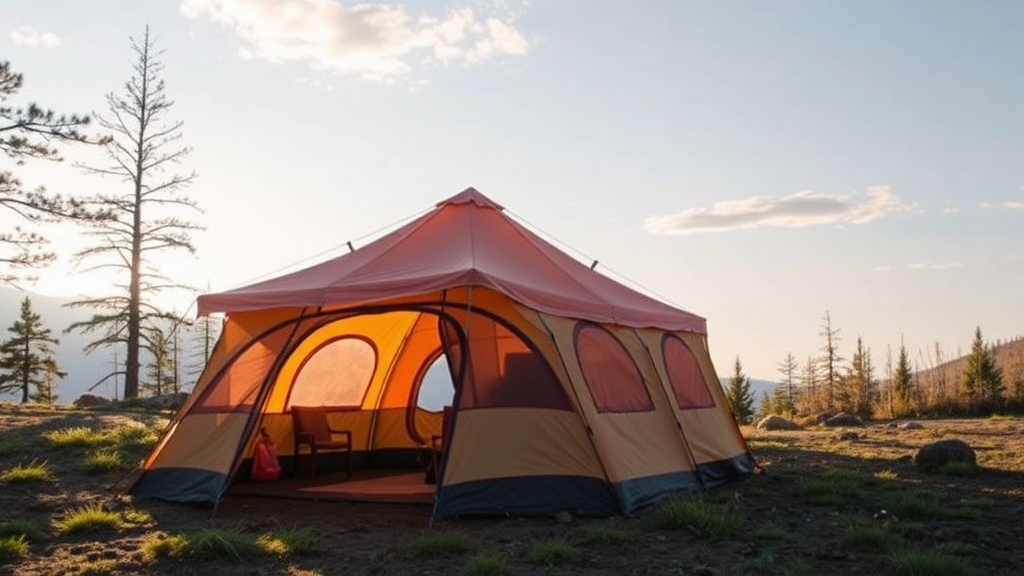
Ever find yourself wondering, “Do I have everything I need for a comfy night under the stars?”
I get it.
Let’s break down the essentials for your tent and shelter setup.
Choosing the Right Tent
First off, size matters.
Are you camping solo or with a group?
You don’t want to be crammed in like sardines.
Look for a tent that offers a bit more space than you think you’ll need.
Key Features to Look For
- Weather Resistance: Make sure your tent can handle unexpected rain or wind. A waterproof tent is a must.
- Ventilation: Summer nights can get stuffy. Look for tents with good airflow.
- Ease of Setup: No one wants to spend hours wrestling with tent poles. Quick-setup tents save time and hassle.
Ground Protection
Don’t forget a footprint or groundsheet.
This protects your tent floor from rocks and damp ground.
Trust me, it’s worth the extra weight in your pack.
Shelter Add-Ons
Consider a tarp or canopy.
These provide extra shade and rain protection for your campsite.
A tarp can also serve as an emergency shelter if needed.
Real-Life Example
Last summer, I camped in the Lake District.
We had a tent with poor ventilation and woke up drenched in sweat.
Lesson learned: always check the tent’s airflow features before buying.
Tent Accessories
- Tent Stakes: Bring extra. The ground can be unpredictable.
- Mallet: For driving stakes into hard ground.
- Repair Kit: Patches and seam sealer can save the day.
Sleeping Bags, Pads, and Pillows for Comfort
Alright, let’s get real â if you’re not sleeping well, your summer camping trip can turn into a nightmare fast. So, what’s the secret sauce for a good night’s sleep under the stars? It’s all about sleeping bags, pads, and pillows. Let’s dive in.
Why Your Sleeping Setup Matters
Ever tried to sleep on the cold, hard ground? Yeah, it’s not fun. A solid sleeping setup can make or break your camping experience. Here’s what you need to know:
- Comfort: You want to wake up refreshed, not with a crick in your neck.
- Temperature Regulation: Nights can get chilly even in summer.
- Portability: You’re carrying this stuff, so it better be lightweight and packable.
Choosing the Right Sleeping Bag
First up, the sleeping bag. Not all sleeping bags are created equal. Here’s what to look for:
- Temperature Rating: Check the bag’s temperature rating to make sure it suits summer nights. A bag rated for 35-50°F (1-10°C) is usually a safe bet.
- Material: Synthetic or down? Synthetic is cheaper and dries faster, but down is lighter and packs smaller.
- Shape: Mummy bags are snug and warm, while rectangular bags offer more room to move.
Pro Tip: If you’re a restless sleeper, go for a rectangular bag or one with a bit more wiggle room.
Sleeping Pads: The Unsung Hero
Next, let’s talk about sleeping pads. Trust me, you don’t want to skip this. Here’s why:
- Insulation: Pads keep you off the cold ground.
- Comfort: They cushion you from rocks and roots.
- Types:
- Foam Pads: Cheap, durable, but bulkier.
- Inflatable Pads: More comfortable and packable but can puncture.
- Self-Inflating Pads: A mix of both â easy to use and comfy.
Quick Tip: If you’re worried about space, go for an inflatable pad. They pack down to almost nothing.
Pillows: The Cherry on Top
Finally, let’s not forget the pillow. Your neck will thank you. Options include:
- Camping Pillows: Specifically designed for the outdoors, often compressible.
- Inflatable Pillows: Super packable but might not be as comfy.
- DIY: Stuff a stuff sack with clothes for a makeshift pillow.
Story Time: I once forgot my pillow on a camping trip and had to use a rolled-up jacket. Let’s just say, lesson learned. Don’t skimp on this â a good pillow can make all the difference.
Packing and Maintenance Tips
- Dry Bags: Keep your sleeping gear dry with waterproof bags.
- Repair Kits: Bring a patch kit for inflatable pads.
- Storage: Store sleeping bags loosely when not in use to maintain loft.
For more tips on ensuring a fun and comfortable camping experience, check out our Summer Camp Checklist: Essential Packing Guide. And if you’re planning to enjoy some bonfire fun, don’t miss our Ultimate Guide to Summer Camp Bonfire Fun.
Tools and Repair Items for Camp Setup
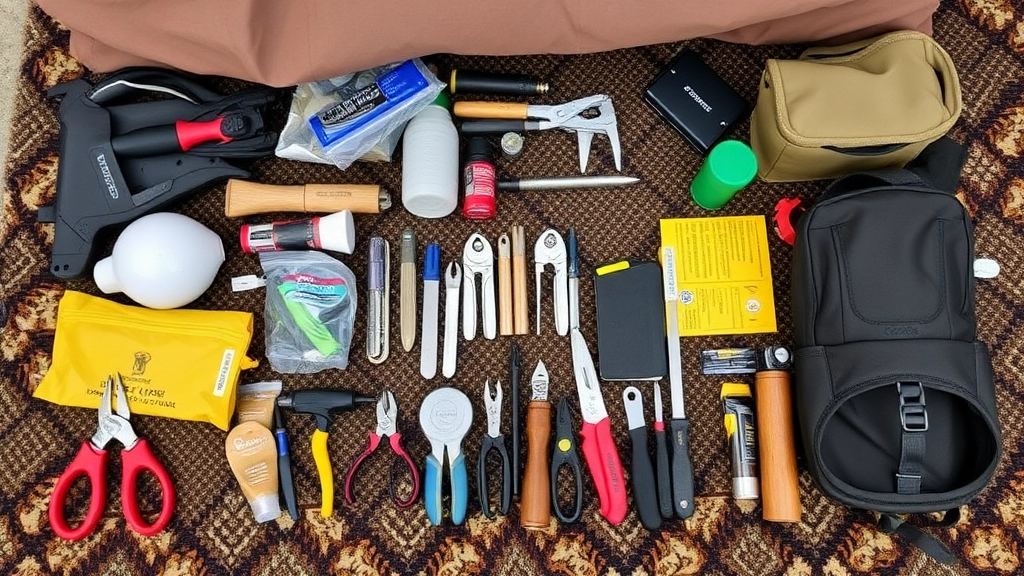
Ever been in the middle of nowhere and realised you forgot a crucial tool?
Yeah, me too.
So let’s talk about the tools and repair items for camp setup.
Because no one wants to be caught out in the wild without the essentials.
Why You Need the Right Tools
First off, having the right tools can make or break your camping experience.
Imagine setting up your tent, and the pole snaps.
What do you do?
Having a repair kit handy can save the day.
Essential Tools to Pack
Here’s a list of must-have tools for your summer camping trip:
- Multi-tool: Think of it as the Swiss Army knife of camping. From cutting rope to fixing gear, it does it all.
- Duct Tape: This stuff is magic. Patch up holes, fix broken gear, you name it.
- Tent Repair Kit: Poles can break, and fabric can tear. A small kit can fix these issues on the spot.
- Paracord: This is your go-to for tying things down or hanging up a tarp.
- Hammer or Mallet: For driving tent stakes into the ground.
- Utility Knife: Always useful for cutting and slicing.
Real-Life Example
Last summer, I was camping in the Lake District.
A sudden gust of wind snapped one of my tent poles.
Luckily, I had a tent repair kit with me.
A quick fix, and I was back in business.
Repair Items You Shouldn’t Forget
- Extra Tent Stakes: Sometimes the ground is tougher than you think.
- Seam Sealer: Keeps your tent waterproof.
- Spare Batteries: For your lanterns and other battery-operated devices.
- Super Glue: Quick fixes for broken gear.
Quick Tips for Packing Tools
- Use a Tool Roll: Keeps everything organised.
- Label Your Gear: Makes it easier to find what you need.
- Check Before You Go: Ensure all tools are in working order.
Packing Cooking Essentials for a Camp Kitchen
Ever tried cooking in the great outdoors and ended up wishing you’d packed better? We’ve all been there. Let’s dive into what you really need for a camp kitchen that’ll keep you fed and happy.
Why a Camp Kitchen Matters
Picture this: you’re out in nature, the sun’s setting, and you’re ready for a meal. But, oops, you forgot the can opener. It’s these little things that can make or break your camping experience.
Essential Cooking Gear
1. Portable Stove or Grill
- Why? Fire bans can be a thing, and not every site allows open fires.
- Options: Compact gas stoves or portable grills work best.
2. Cookware
- Essentials: A pot, pan, and kettle.
- Tip: Go for lightweight, stackable options.
3. Utensils
- Must-Haves: Spatula, tongs, and a ladle.
- Pro Tip: Look for multi-tools that save space.
4. Cutting Tools
- Knife: A good quality, sharp camping knife.
- Chopping Board: Small and foldable is ideal.
Food Storage and Prep
1. Cooler Box
- Why? Keeps perishables fresh.
- Hack: Pre-freeze some items to keep everything cooler for longer.
2. Food Containers
- Options: Reusable silicone bags or lightweight containers.
- Benefit: Keeps your food organised and critter-free.
3. Cleaning Kit
- Essentials: Biodegradable soap, sponge, and a small towel.
- Reminder: Leave no traceâclean up thoroughly.
Personal Stories and Tips
I once camped without a proper stove, relying on a campfire that just wouldn’t light. Lesson learned: always have a backup plan. A simple portable stove saved my next trip.
Packing for Convenience
- Lists: Create a checklist to ensure nothing’s forgotten.
- Organisation: Use clear bins or bags to categorise items.
If you’re planning a family trip, don’t miss our ultimate guide to kids’ summer camps for more tips and tricks. And for those interested in combining camping with educational activities, check out our list of best STEM education summer camps for kids.
Clothes for Hot Days and Cool Nights

Ever wondered how to pack the right clothes for summer camping?
It’s a real puzzle, right?
You don’t want to freeze at night or sweat buckets during the day.
Let’s break it down.
Daytime Essentials: Stay Cool
When the sun’s blazing, you need to stay cool.
Here’s what works:
- Lightweight T-shirts: Go for breathable fabrics like cotton or moisture-wicking materials.
- Shorts: Comfortable and easy to move in.
- Wide-brimmed hat: Keeps the sun off your face and neck.
- Sunglasses: Protect your eyes from UV rays.
- Sandals or breathable trainers: Let your feet breathe.
Nighttime Essentials: Stay Warm
Nights can get chilly, even in summer.
Here’s your go-to list:
- Long-sleeved shirts: Opt for something soft and warm.
- Lightweight jacket: A fleece or windbreaker works wonders.
- Trousers: Comfortable but warm enough for cooler temps.
- Socks: Thick ones to keep your feet warm.
- Beanie or hat: Keeps your head warm when the temperature drops.
Layering: The Secret Weapon
Layering is key.
Why?
Because it lets you adjust to the changing temps easily.
- Base layer: Moisture-wicking T-shirt.
- Middle layer: Insulating fleece or jumper.
- Outer layer: Waterproof jacket for unexpected rain.
Real Talk: What I Learned the Hard Way
Once, I packed only for hot days.
Big mistake.
I ended up freezing when the temperature dipped.
Lesson learned: Always pack for both extremes.
Packing Tips: Save Space
Worried about fitting everything in your bag?
Try these:
- Roll your clothes: Saves space and reduces wrinkles.
- Use packing cubes: Keeps everything organised.
- Choose versatile items: Clothes that work for both day and night.
Weatherproofing: What to Bring for Rain and Wind
Alright, let’s talk about a real worry when it comes to summer camping: weatherproofing. You know, that moment when the skies open up and you’re left scrambling to keep your gear dry, or when the wind picks up and you’re holding onto your tent for dear life. Yeah, we’ve all been there. So, let’s break down exactly what you need to stay dry and cosy.
Rain Gear: Stay Dry, Stay Happy
First things first, you need to keep yourself dry. Nothing ruins a camping trip faster than being soaked to the bone. Here’s what I always pack:
- Waterproof Jacket and Trousers: Look for breathable materials like Gore-Tex. Trust me, you don’t want to be sweating inside your rain gear.
- Rain Cover for Your Backpack: Most backpacks come with one, but if yours doesn’t, buy one separately. It’s a game-changer.
- Waterproof Footwear: Whether it’s hiking boots or wellies, make sure they’re waterproof. Wet feet are a nightmare.
- Poncho: A poncho can be a lifesaver for quick cover-ups and it’s easy to throw over your gear.
Wind Protection: Don’t Get Blown Away
Wind can be just as challenging as rain. Here’s how to make sure you’re not fighting with your tent all night:
- Sturdy Tent with a Low Profile: Tents designed for windy conditions are typically lower to the ground. Make sure your tent has strong poles and a good design.
- Extra Guy Lines and Stakes: Reinforce your tent with additional guy lines and stakes. It adds stability and keeps everything anchored.
- Windbreaker Jacket: A good windbreaker will keep the chill out without making you feel like you’re in a sauna.
Pro Tips for Weatherproofing Your Campsite
- Site Selection: Choose a campsite with natural windbreaks like trees or hills. Avoid low-lying areas where water can pool.
- Tarp Setup: Set up a tarp over your cooking area. It’s a great way to stay dry while making meals. Make sure it’s secured tightly to withstand wind gusts.
- Dry Bags: Use dry bags for your clothes and electronics. They’re a lifesaver when the rain won’t quit.
- Seam Sealer: Apply seam sealer to your tent before you go. It’s a simple step that can prevent leaks.
Real Talk: My Rainy Night Camping Story
I remember one trip where the rain just wouldn’t stop. I thought I was prepared, but my tent started leaking, and I spent the night bailing out water with a cup. Not fun. After that, I invested in a high-quality tent and seam sealer. Now, I sleep like a baby, rain or shine.
Final Thoughts
Weatherproofing isn’t just about staying dry and warm; it’s about peace of mind. When you know you’re prepared, you can relax and enjoy your trip, no matter what Mother Nature throws at you. So, pack smart, be prepared, and keep those camping vibes high.
Remember, weatherproofing is key to a successful summer camping trip. Don’t skimp on this part of your gear. Trust me, you’ll thank yourself when the weather turns.
Ready to tackle your next camping trip? Check out our other guides on UCSB Summer Camps: Fun, Learning, and Safety and Healthy and Easy Summer Camp Lunch Ideas to make sure you’ve got everything covered.
Safety and First-Aid: Must-Have Items
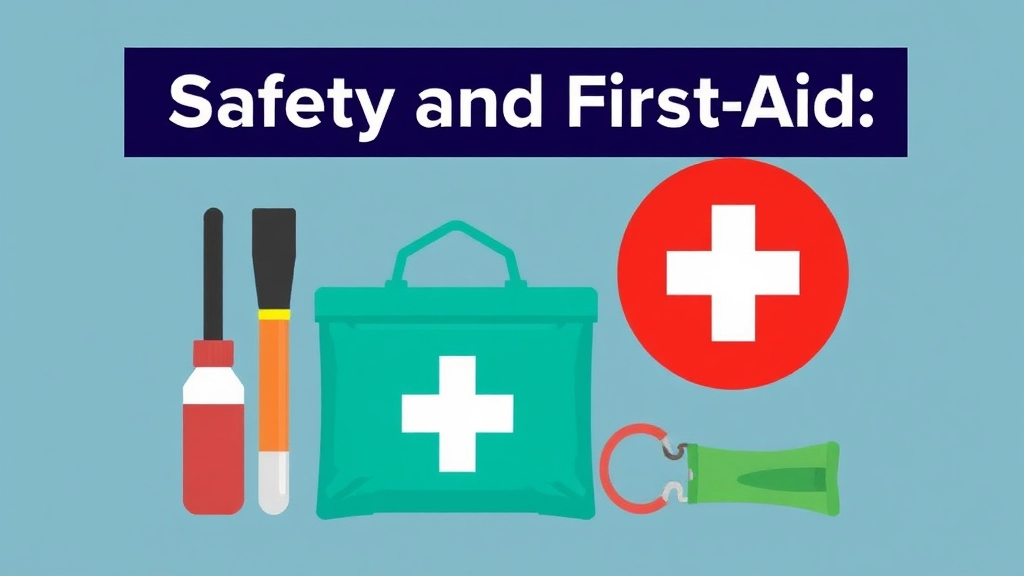
Ever been out camping and thought, “What if something goes wrong?”
Yeah, me too.
Safety and first-aid are non-negotiable when you’re out in the wild.
So, let’s get into it.
First-Aid Kit Essentials
Your first-aid kit is your lifeline.
Here’s what you need:
- Bandages and Dressings: Cuts happen. Be ready.
- Antiseptic Wipes: Clean those wounds.
- Pain Relievers: Headaches and sore muscles are part of the game.
- Tweezers and Scissors: For splinters and cutting tape.
- Thermometer: Know if it’s just a fever or something more.
Emergency Tools
Not just for the Boy Scouts.
These tools are lifesavers:
- Multi-tool: Swiss Army style. Covers everything.
- Emergency Blanket: Hypothermia is real, even in summer.
- Whistle: Signal for help if you get lost.
- Headlamp: Hands-free lighting for those late-night emergencies.
Personal Safety Gear
Because your safety matters, too:
- Insect Repellent: Keep those bugs away.
- Sunscreen: Sunburns can ruin your trip.
- Water Purification Tablets: Clean water is a must.
- Fire Extinguisher: Campfires can get out of hand.
Real Talk
I once went camping and forgot my insect repellent.
Big mistake.
Ended up with bites all over.
Don’t be me.
Packing Tips
Keep it simple but effective:
- Separate Pouches: For easy access.
- Waterproof Bags: Protect your gear from the elements.
- Label Everything: Know where your stuff is.
Packing for Fun: Outdoor Games and Extras
Alright, let’s get real. When you’re heading out for a summer camping trip, it’s not just about survivingâit’s about thriving. And thriving means having fun. So, what should you pack to keep everyone entertained? That’s the big question. Let’s dive into the essentials for packing outdoor games and extras that will make your camping trip unforgettable.
Why Pack for Fun?
First off, why even bother packing games and extras? Well, picture this: you’ve set up your tent, had a great meal, and now you’re just sitting around. Sure, the scenery is beautiful, but what next? You don’t want to end up bored or worse, with bored kids. So, packing for fun is crucial.
Must-Have Outdoor Games
- Frisbee: Simple, lightweight, and a blast for all ages. Plus, it’s a great way to get everyone moving.
- Deck of Cards: Perfect for those lazy afternoons or evenings around the campfire. You can play countless games with just one deck.
- Cornhole Set: If you have the space, this is a crowd-pleaser. It’s easy to set up and can keep everyone entertained for hours.
- Scavenger Hunt Kit: Create a list of items to find around the campsite. It’s a great way to explore and adds a bit of adventure to your trip.
- Badminton or Paddle Ball: Lightweight and easy to pack, these games are perfect for a bit of friendly competition.
Extras That Elevate the Experience
- Hammock: Trust me, nothing beats lounging in a hammock with a good book or just taking in the scenery.
- Portable Speaker: Music can set the mood, whether you’re relaxing or having a little dance party under the stars.
- Binoculars: Great for bird-watching or just getting a closer look at the landscape.
- Sketchbook and Pencils: For the artists in the group, capturing the beauty of nature can be incredibly rewarding.
- Glow Sticks: Fun for the kids and useful for keeping track of everyone after dark.
Real Stories, Real Fun
Let me share a quick story. Last summer, I went camping with a group of friends. We packed a simple frisbee and a deck of cards. One evening, we started a game of Ultimate Frisbee that quickly turned into a full-blown tournament. It was spontaneous, hilarious, and one of the highlights of the trip. The cards? They came in handy during a rainy afternoon when we were stuck in the tent. We played poker, told stories, and laughed till our sides hurt.
Keep It Light, Keep It Simple
The key here is to keep it light and simple. You don’t need to pack a ton of stuff to have a good time. Focus on versatile items that can be used in multiple ways. And remember, the best moments often come from the simplest activities.
Internal Links for More Tips
For more on how to pack smart, check out our section on summer camping outfits. And if you’re bringing kids along, don’t miss our guide on fun summer camp activities for kids.
How to Pack Smart: Space-Saving Tips
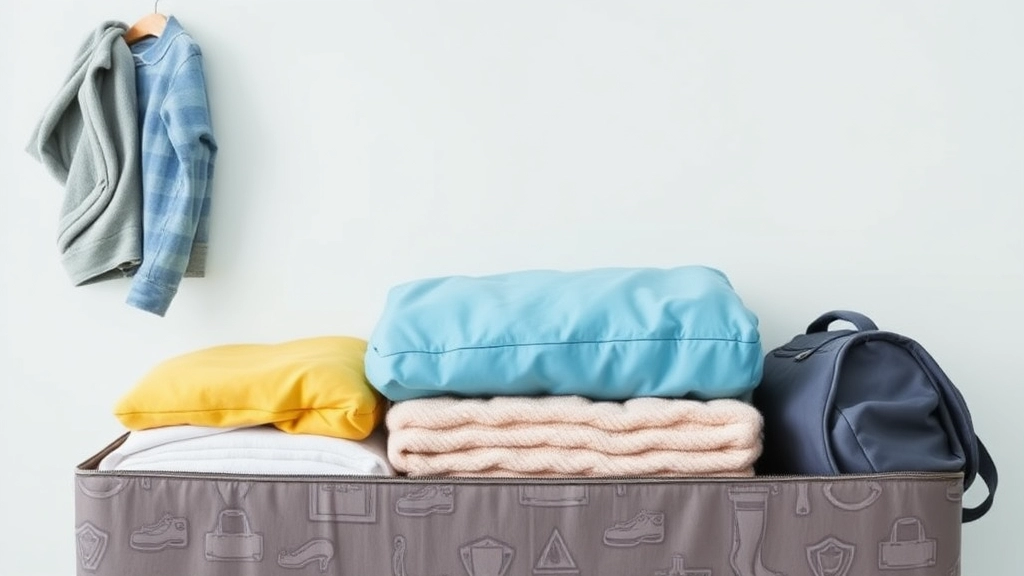
Ever struggled to fit everything you need for a camping trip into your backpack or car?
You’re not alone.
Packing smart is an art, and it can make or break your camping experience.
So, let’s dive in.
Why is Packing Smart Important?
You want to enjoy the great outdoors, not wrestle with your gear.
Packing efficiently saves you time, space, and stress.
Start with a Packing List
First things first, make a list.
A detailed list helps you remember essentials and avoid overpacking.
Trust me, you don’t need five pairs of shoes.
Compress and Organise
Compression bags are your best friend.
They shrink bulky items like sleeping bags and clothes.
Use packing cubes for smaller items.
It keeps everything organised and easy to find.
Multi-Use Items
Bring gear that serves multiple purposes.
A multi-tool can replace several single-use tools.
A sarong can be a towel, blanket, or even a curtain.
Roll, Don’t Fold
Rolling clothes saves more space than folding.
Plus, it reduces wrinkles.
Nesting and Stacking
Think like a Russian doll.
Nest smaller items inside larger ones.
Stack pots and pans.
Lightweight Gear
Opt for lightweight gear whenever possible.
Ultralight tents, sleeping bags, and cookware can shave off kilos.
Limit Duplicates
Do you really need three torches?
One good one will do.
Share the Load
If you’re camping with friends or family, share gear.
One person can bring the stove; another can bring the cooking utensils.
Snacks and Food
Pre-pack your food into ziplock bags.
It’s easier to store and saves space.
Personal Stories
I remember my first camping trip.
I packed everything but the kitchen sink.
By the time I got to the campsite, I was exhausted.
Now, I pack smart, and it’s a game-changer.
Must-Have Electronics and Lighting for Campsites
Alright, let’s dive into something we all think about before heading out: electronics and lighting for campsites. Ever worried about being stuck in the dark or your phone dying when you need it most? You’re not alone. Here’s what you need to make your camping experience smooth and litâliterally.
Why You Need Electronics and Lighting
Imagine this: you’re out in the wilderness, the sun’s down, and you can’t see a thing. Not exactly the adventure you planned, right? That’s why having the right gear is crucial. Here’s what I always pack to keep things bright and connected.
Essential Electronics for Camping
- Portable Charger:
- Keep Your Devices Alive: A portable charger is a lifesaver when your phone or GPS is running low. Look for one with a high mAh capacity.
- Solar Options: Consider solar chargers if you’re going off-grid for a while.
- GPS Device:
- Stay on Track: While maps are great, a GPS device ensures you don’t get lost.
- Offline Maps: Download maps beforehand to save data and battery.
- Walkie-Talkies:
- Communication Made Easy: Perfect for areas with no phone signal. Make sure they have a good range.
Lighting Essentials for Campsites
- LED Lanterns:
- Bright and Efficient: LED lanterns are energy-efficient and provide ample light. Some are even rechargeable.
- Adjustable Brightness: Look for ones with dimming options for different needs.
- Headlamps:
- Hands-Free Lighting: Essential for nighttime hikes or cooking. Get one with a red light mode to preserve night vision.
- Water-Resistant: Ensure it can handle unexpected rain.
- Flashlights:
- Compact and Powerful: A good flashlight is a must. Opt for LED versions for longer battery life.
- Durable Build: Choose something that can withstand drops and rough use.
Packing Smart: Space-Saving Tips
- Multi-Use Items: Opt for gadgets that serve multiple purposes, like a lantern that doubles as a power bank.
- Compact Designs: Choose foldable or collapsible items to save space.
- Organise Cables: Use a small pouch to keep all your charging cords and adapters tidy.
Real Stories: Why It Matters
I remember this one time when I forgot my headlamp. Trying to set up a tent in the dark was like a comedy show no one asked for. Lesson learned: always double-check your lighting gear.
If you’re looking for more tips on how to prepare for your camping trip, check out our 1-week summer camp packing list essentials. Also, for those who enjoy combining art with outdoor activities, our summer camp art activities guide offers some fantastic ideas.
Special Considerations: Packing for Kids and Pets
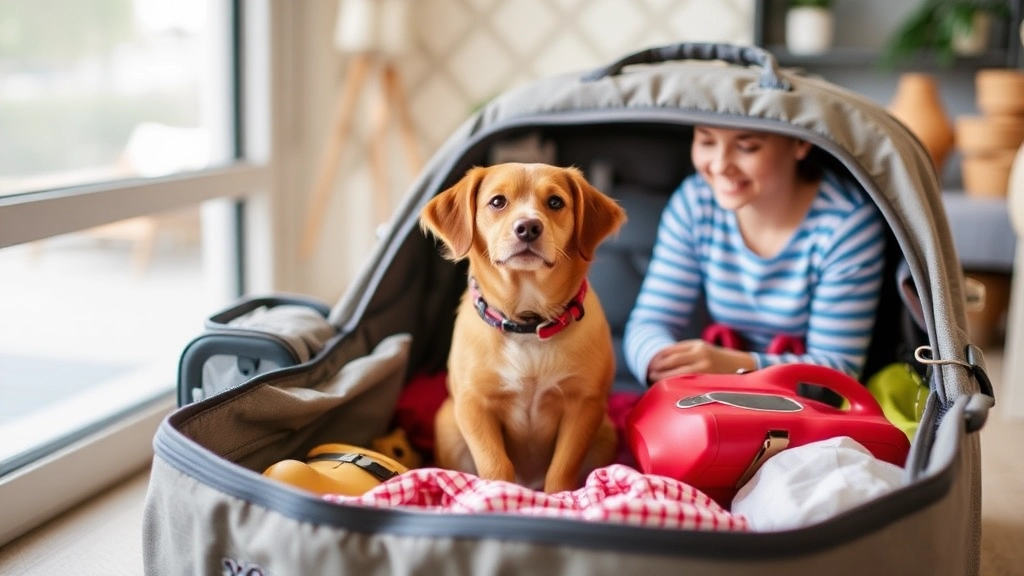
Ever tried camping with kids or pets?
It can be a blast, but it also comes with its own set of challenges.
Let’s break it down.
Packing for Kids
Kids need their own gear and comfort items to make the trip enjoyable.
Here’s a quick checklist:
- Kid-Friendly Sleeping Gear: Smaller sleeping bags and pads tailored for kids.
- Favourite Toys and Books: Keeps them entertained during downtime.
- Extra Clothes: Kids get messy. Pack more than you think you’ll need.
- Snacks: Healthy and easy-to-eat options. Think granola bars, fruit, and crackers.
- First-Aid Kit: Include child-specific items like band-aids with fun designs and child-friendly medications.
- Sunscreen and Bug Spray: Make sure it’s suitable for their sensitive skin.
Packing for Pets
Pets are part of the family, so let’s make sure they’re comfy too.
Here’s what you’ll need:
- Pet Bed or Blanket: A familiar spot for them to sleep.
- Food and Water Bowls: Collapsible ones save space.
- Leash and Harness: For walks and to keep them safe.
- Pet First-Aid Kit: Include items like tweezers for tick removal and pet-safe antiseptics.
- Toys and Chews: Keeps them occupied.
- Waste Bags: Clean up after them to keep the campsite tidy.
Real Stories and Tips
I remember my first camping trip with my two kids and our dog, Max.
We forgot Max’s favourite chew toy, and he was restless all night.
Lesson learned: Always pack familiar items for pets.
Another time, my youngest got a scrape. Having a fun band-aid made all the difference.
Space-Saving Tips
- Use compression bags for kids’ clothes.
- Collapsible bowls for pets save a ton of space.
- Multi-purpose items: A blanket can be both a play area for kids and a bed for your pet.
Choosing the Right Footwear for Summer Camping
Are you tired of ending your camping trips with sore feet and blisters? Let’s talk about choosing the right footwear for summer camping. Trust me, your feet will thank you for it.
Why Footwear Matters
When you’re out in the wild, your feet are your best friends. They take you everywhere, from rocky trails to muddy paths. The wrong shoes can turn a great adventure into a painful ordeal. So, how do you pick the perfect pair?
Types of Footwear to Consider
- Hiking Boots: These are a must if you’re planning to hit rough terrains. They offer great ankle support and are usually waterproof.
- Trail Runners: Perfect for those who prefer a lighter, more flexible option. They dry quickly and are excellent for well-maintained trails.
- Sandals: Yes, you heard me right. Sandals are great for campsite wear. They let your feet breathe and are easy to slip on and off.
- Water Shoes: If your adventure includes river crossings or lakes, these are lifesavers. They dry fast and offer good grip on slippery surfaces.
What to Look For
- Comfort: Make sure your shoes fit well. Try them on with the socks you plan to wear.
- Durability: Look for robust materials that can withstand rough conditions.
- Breathability: Mesh panels and breathable fabrics keep your feet cool.
- Waterproofing: Essential if you expect rain or wet conditions.
Pro Tips
- Break Them In: Never take brand-new shoes on a camping trip. Wear them around the house or on short walks first.
- Pack Extra Socks: Wet socks can ruin your day. Bring a few extra pairs just in case.
- Foot Powder: Keeps your feet dry and prevents blisters.
Real Talk: My Experience
Last summer, I made the rookie mistake of taking new hiking boots on a three-day trek. By day two, my feet were screaming. I had blisters the size of coins. Lesson learned: always break in your shoes. Now, I swear by trail runners for most of my summer adventures. They’re light, comfy, and dry quickly.
For more tips on staying comfortable during your camping trips, check out our guide on summer camping attire. And if you’re planning a family trip, don’t miss our list of top summer camps in McKinney, TX.
Got any favourite camping shoes? Share your stories and tips!
Firewood and Campfire Safety Essentials
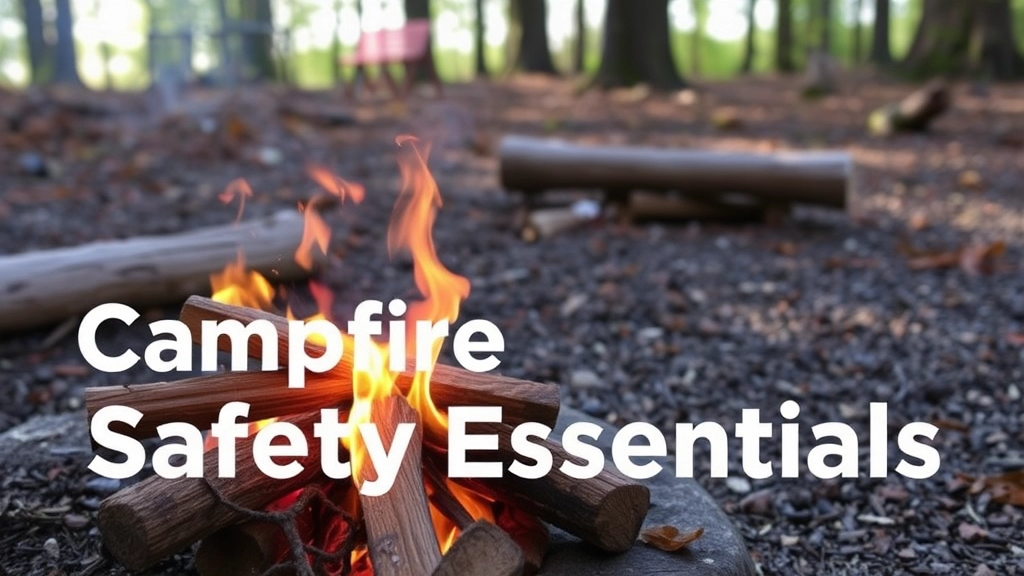
Ever worried about starting a campfire safely or where to find firewood?
You’re not alone.
Let’s dive into the essentials.
Why Firewood Matters
Without proper firewood, your campfire dreams can go up in smoke.
Here’s what you need to know:
- Local Sourcing: Always buy firewood near your campsite. It prevents spreading pests.
- Types of Wood: Hardwoods like oak burn longer. Softwoods like pine ignite quickly but burn fast.
Campfire Safety Tips
Safety first, always.
Here’s how to keep things under control:
- Fire Ring: Use established fire rings to contain the fire.
- Clear Area: Remove dry leaves and twigs around the fire area.
- Bucket of Water: Keep it nearby for emergencies.
Building the Perfect Campfire
Want a fire that lasts?
Try this:
- Tinder: Use dry leaves or paper.
- Kindling: Small sticks that catch fire easily.
- Logs: Larger pieces for sustained burn.
Real Talk: Stories from the Campsite
I remember a trip where we forgot to clear the area.
A gust of wind sent embers flying.
Lesson learned.
Packing Fire Safety Essentials
Don’t leave home without these:
- Fire Extinguisher: Small but mighty.
- Fireproof Gloves: Protect your hands.
- Shovel: For smothering fires and moving coals.
Planning Food and Snacks for the Whole Trip
Planning food for a camping trip can feel like a puzzle. What if you run out of food? What if it spoils? Let’s tackle these worries head-on.
Start with a Meal Plan
Why meal planning rocks:
- No guesswork: You know exactly what to eat and when.
- Less waste: Only pack what you need.
- Balanced diet: Ensure you’re getting all the nutrients.
Write down each meal for each day. Breakfast, lunch, dinner, and snacks. Keep it simple.
Easy Breakfast Ideas
- Overnight oats: Mix oats, milk, and your favourite toppings in a jar. Ready to eat in the morning.
- Breakfast burritos: Pre-make and wrap in foil. Heat up over the campfire.
- Fruit and yoghurt: Easy, healthy, and refreshing.
Quick and Tasty Lunches
- Sandwiches: Classic, easy to make, and versatile.
- Wraps: Fill with veggies, hummus, or deli meats.
- Salads: Pre-make and store in a cooler. Add dressing when ready to eat.
Hearty Dinners
- Foil packet meals: Meat, veggies, and seasoning wrapped in foil. Cook over the fire.
- One-pot pasta: Cook everything in one pot. Less mess, more flavour.
- Grilled skewers: Meat and veggies on a stick. Simple and delicious.
Snacks to Keep You Going
- Trail mix: Nuts, dried fruits, and a bit of chocolate.
- Granola bars: Easy to pack and eat on the go.
- Fresh fruit: Apples, oranges, and bananas travel well.
Storage Tips
- Coolers: Keep perishable items cold. Ice packs are your best friend.
- Dry bags: Protect food from getting wet.
- Bear-proof containers: If you’re in bear country, don’t skip this.
Cooking Gear Essentials
- Portable stove: For when campfires aren’t an option.
- Cookware: Lightweight pots and pans.
- Utensils: Don’t forget the spatula and tongs.
- Cleaning supplies: Biodegradable soap and a sponge.
Real Talk: What If It Rains?
- Backup meals: Pack ready-to-eat meals that don’t need cooking.
- Tarp or canopy: Create a dry cooking area.
Final Tips
- Check local regulations: Some places have restrictions on campfires.
- Pre-cook some meals: Saves time and hassle at the campsite.
- Stay hydrated: Pack plenty of water or a water filter.
FAQs: Summer Camping Packing List
What are the essential items for tent and shelter setup?
For a comfortable camping experience, make sure to pack a tent with good weather resistance, ventilation, and ease of setup. Don’t forget a footprint or groundsheet for ground protection, and consider bringing a tarp or canopy for extra shade and rain protection. Also, pack extra tent stakes, a mallet, and a repair kit.
Which tools and repair items should I bring for camp setup?
Essential tools include a multi-tool, duct tape, a tent repair kit, paracord, a hammer or mallet, and a utility knife. Additionally, bring extra tent stakes, seam sealer, spare batteries, and super glue for quick fixes.
How should I pack clothes for hot days and cool nights?
For daytime, pack lightweight T-shirts, shorts, a wide-brimmed hat, sunglasses, and breathable footwear. For nighttime, bring long-sleeved shirts, a lightweight jacket, trousers, thick socks, and a beanie. Layering is key: use a moisture-wicking base layer, an insulating middle layer, and a waterproof outer layer.
What should be included in a first-aid kit for camping?
Your first-aid kit should include bandages and dressings, antiseptic wipes, pain relievers, tweezers, scissors, and a thermometer. Emergency tools like a multi-tool, emergency blanket, whistle, and headlamp are also crucial. Don’t forget personal safety gear such as insect repellent, sunscreen, water purification tablets, and a fire extinguisher.
How can I pack smart to save space?
Start with a detailed packing list and use compression bags and packing cubes to organise items. Opt for multi-use gear, roll clothes instead of folding, nest smaller items inside larger ones, and choose lightweight gear. Limit duplicates and share the load with camping companions. Pre-pack snacks and food into ziplock bags for easier storage.
What special considerations should I keep in mind when packing for kids and pets?
For kids, pack kid-friendly sleeping gear, favourite toys and books, extra clothes, snacks, a child-specific first-aid kit, and suitable sunscreen and bug spray. For pets, bring a pet bed or blanket, collapsible food and water bowls, a leash and harness, a pet first-aid kit, toys and chews, and waste bags. Use compression bags for kids’ clothes and collapsible bowls for pets to save space.
How can I ensure campfire safety and what firewood should I use?
Always buy firewood locally to prevent spreading pests. Use hardwoods like oak for longer burns and softwoods like pine for quick ignition. For safety, use established fire rings, clear the area of dry leaves and twigs, and keep a bucket of water nearby. Essential fire safety items include a fire extinguisher, fireproof gloves, and a shovel.
References
-
Choosing the Right Tent and Shelter
-
Key Features to Look for in a Tent
-
Essential Tools and Repair Items for Camping

